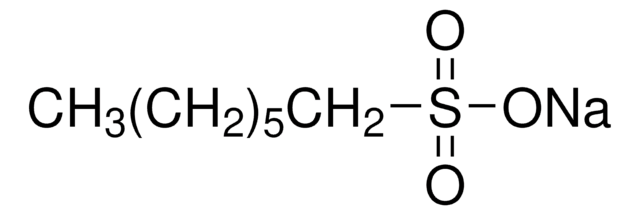C3561
Brenzcatechin
suitable for plant cell culture, BioReagent, ≥99%, powder
Synonym(e):
1,2-Benzoldiol, 1,2-Dihydroxybenzol, 2-Hydroxyphenol, Pyrokatechin, ‘Catechol’
About This Item
Empfohlene Produkte
Dampfdichte
3.8 (vs air)
Qualitätsniveau
Dampfdruck
1 mmHg ( 75 °C)
10 mmHg ( 118.3 °C)
Produktlinie
BioReagent
Assay
≥99%
Form
powder
Methode(n)
cell culture | plant: suitable
Farbe
white to faint beige
bp
245 °C (lit.)
mp (Schmelzpunkt)
100-103 °C (lit.)
Löslichkeit
water: 50 mg/mL, clear, colorless to faintly yellow
Lagertemp.
room temp
SMILES String
Oc1ccccc1O
InChI
1S/C6H6O2/c7-5-3-1-2-4-6(5)8/h1-4,7-8H
InChIKey
YCIMNLLNPGFGHC-UHFFFAOYSA-N
Suchen Sie nach ähnlichen Produkten? Aufrufen Leitfaden zum Produktvergleich
Vorsicht
Signalwort
Danger
Gefahreneinstufungen
Acute Tox. 3 Dermal - Acute Tox. 3 Oral - Carc. 1B - Eye Dam. 1 - Muta. 2 - Skin Irrit. 2 - Skin Sens. 1
Lagerklassenschlüssel
6.1C - Combustible acute toxic Cat.3 / toxic compounds or compounds which causing chronic effects
WGK
WGK 3
Flammpunkt (°F)
260.6 °F - closed cup
Flammpunkt (°C)
127 °C - closed cup
Persönliche Schutzausrüstung
dust mask type N95 (US), Eyeshields, Faceshields, Gloves
Hier finden Sie alle aktuellen Versionen:
Besitzen Sie dieses Produkt bereits?
In der Dokumentenbibliothek finden Sie die Dokumentation zu den Produkten, die Sie kürzlich erworben haben.
Kunden haben sich ebenfalls angesehen
Unser Team von Wissenschaftlern verfügt über Erfahrung in allen Forschungsbereichen einschließlich Life Science, Materialwissenschaften, chemischer Synthese, Chromatographie, Analytik und vielen mehr..
Setzen Sie sich mit dem technischen Dienst in Verbindung.








